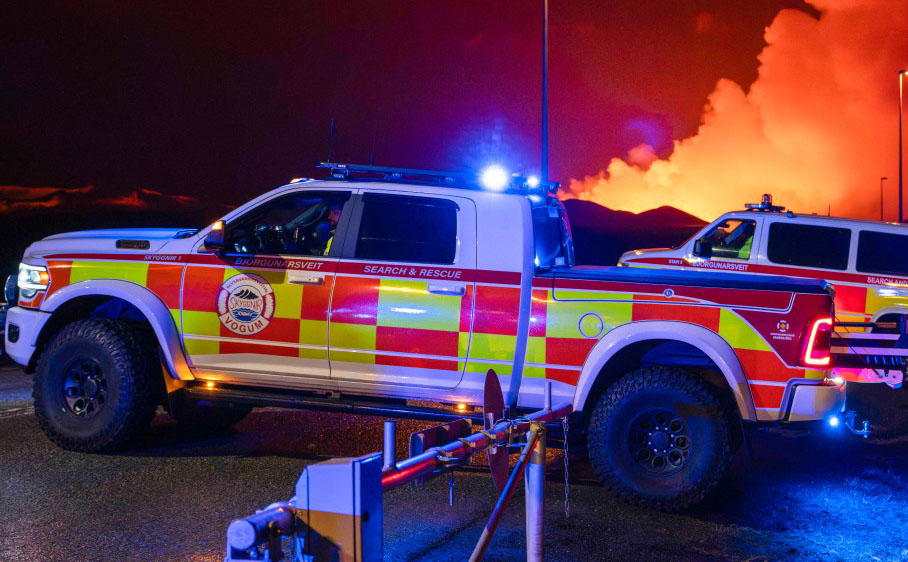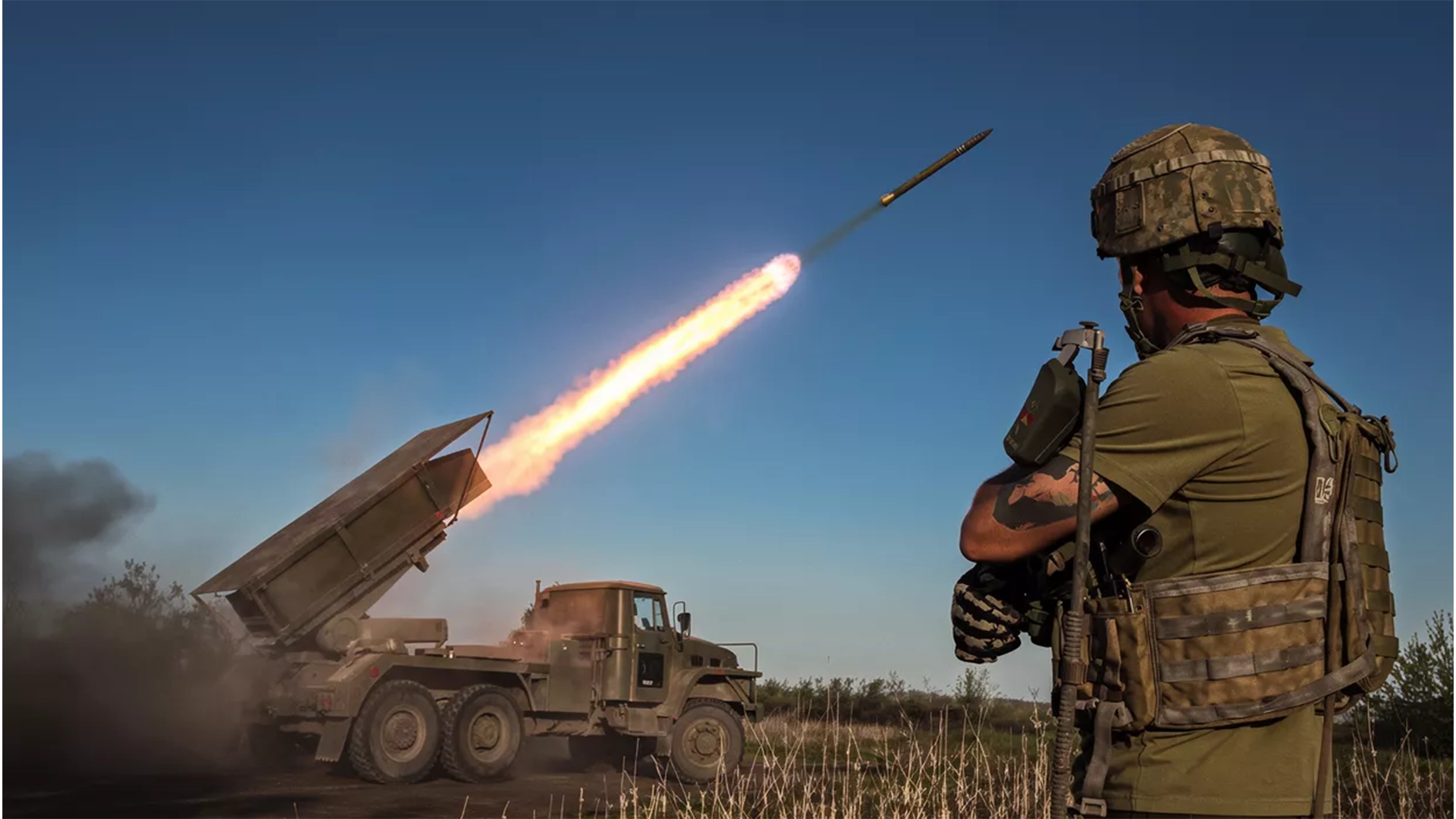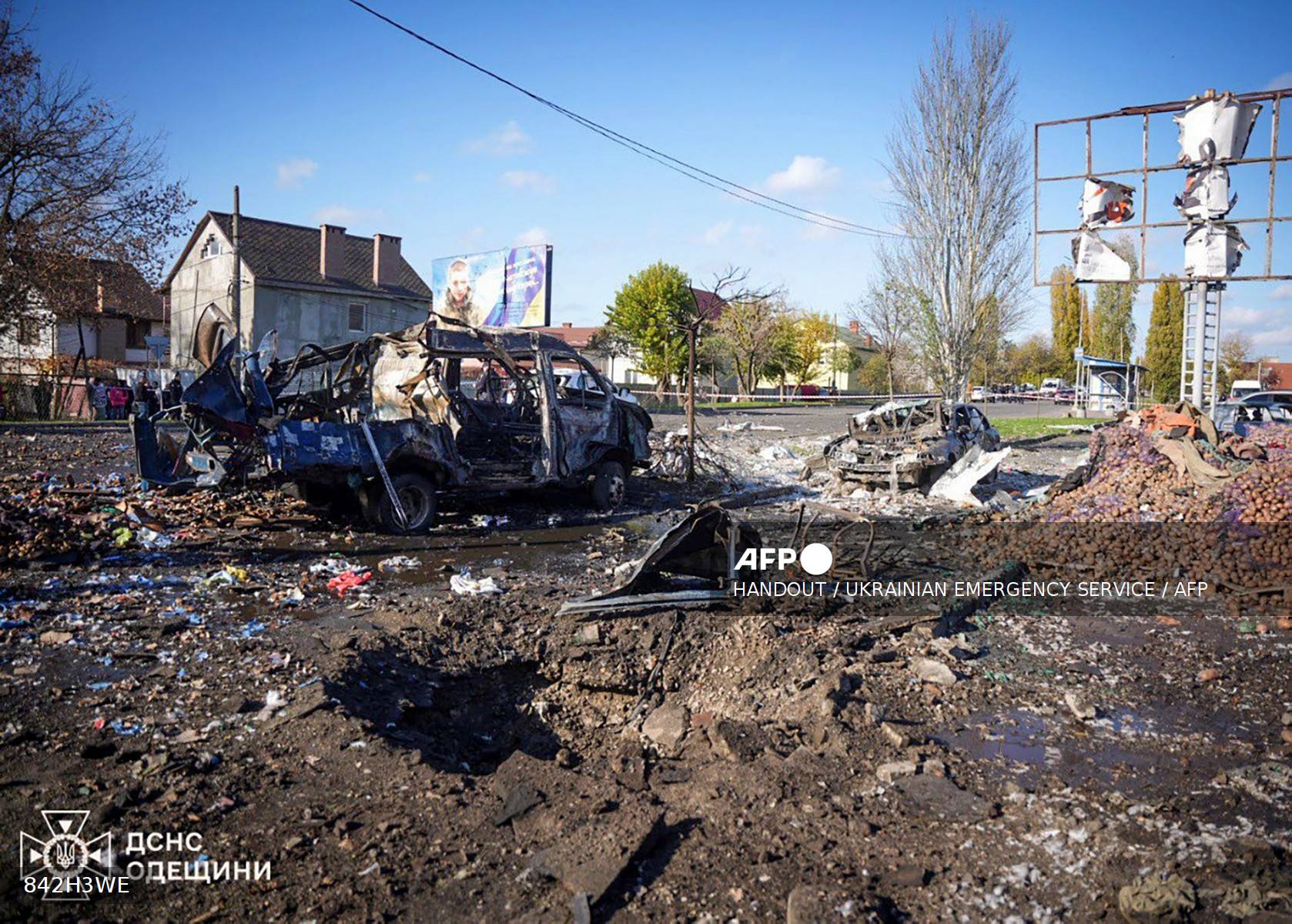
Icelandic police declared a state of emergency Saturday as lava spewed from a new volcanic fissure on the Reykjanes peninsula, the fourth eruption to hit the area since December.
A “volcanic eruption has started between stora Skogfell and Hagafell on the Reykjanes Peninsula,” said a statement from the Icelandic Met Office (IMO). Live video images showed glowing lava and billowing smoke.
Iceland’s Department of Civil Protection and Emergency Management announced it had sent a helicopter to narrow down the exact location of the new fissure. The authority also said the police had declared a state of emergency due to the eruption.
According to the IMO, it occurred close to the same location as a previous eruption on February 8. Lava appeared to flow south towards the dykes built to protect the fishing village Grindavik, it said.
Just after 2200 GMT, “the southern lava front was just 200 metres from the barriers on the eastern side of Grindavik and moving at a rate of about one km per hour,” it added.
– Almost no warning –
Lava was also flowing west, as it had on February 8, and the length of the fissure was estimated to be 2.9 kilometres (1.8 miles), said the IMO.
“From initial assessments of web camera imagery and aerial photographs from the helicopter flight, the eruption is thought to be the largest (in terms of magma discharge) of the three previous fissure eruptions from the Sundhnukur crater row,” IMO said, stressing the assessment was based on the first hour of “eruptive activity.”
Minutes before the eruption, the agency had issued a statement saying that seismic activity indicated that there was an increased chance of an eruption.
“The pre-eruptive warning phase was very short,” the IMO said.
On Friday, the IMO said that magma was accumulating under the ground in the area “which could end with a new magma intrusion and possibly an eruption”. That could happen “with very little warning”, it said.
Local media reported that Iceland’s famed Blue Lagoon geothermal spa had been evacuated as well as Grindavik.
The roughly 4,000 residents of Grindavik were only cleared to return to their homes on February 19 after having been evacuated on November 11, though only around a hundred chose to do so.
On that occasion, hundreds of tremors damaged buildings and opened up huge cracks in roads.
The quakes were followed by a volcanic fissure on December 18 that spared the village.






